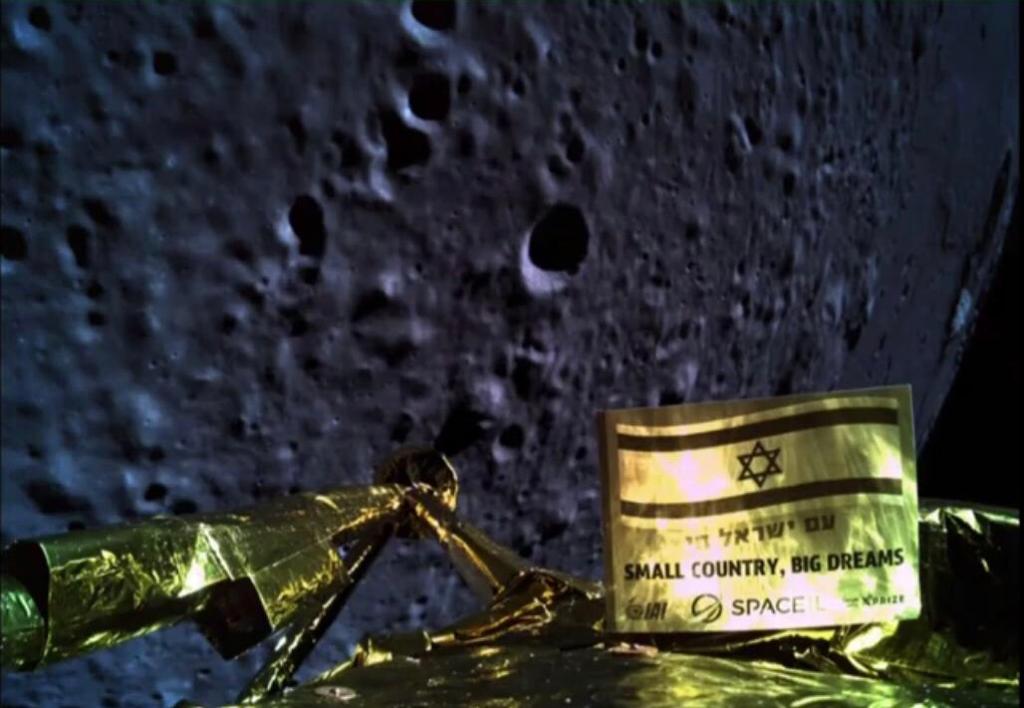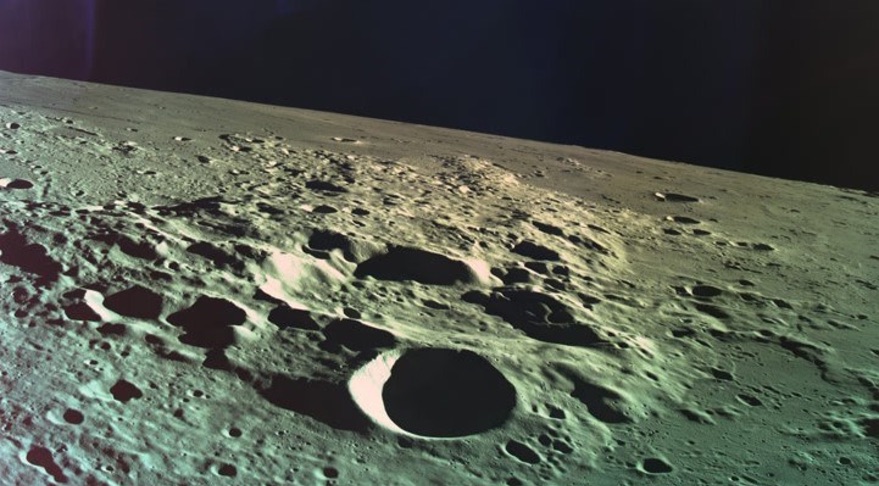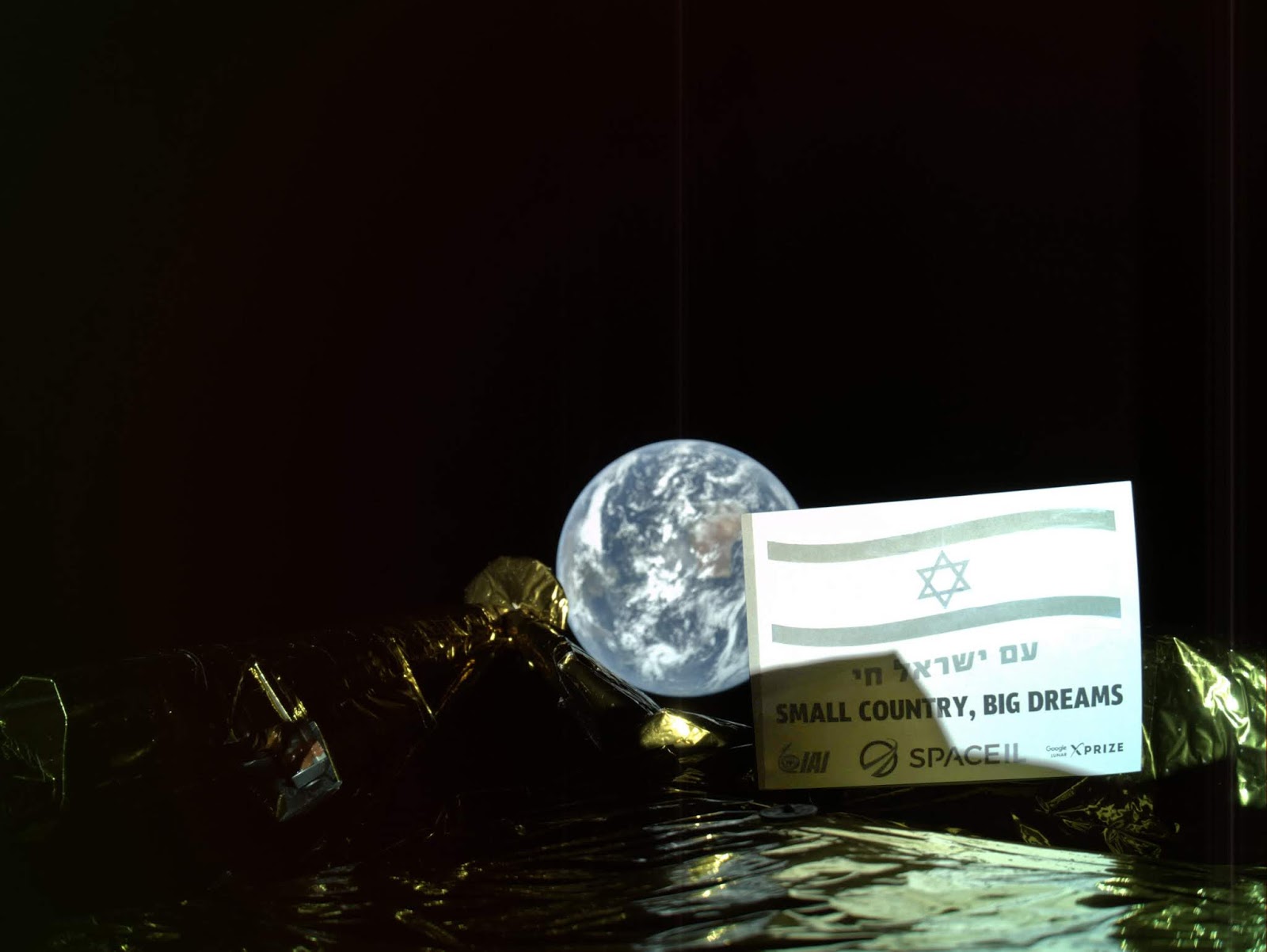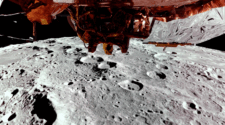
After a gallant effort worthy of the celestial goal the small privately built Israeli moon lander Beresheet fortified with high hopes failed in the final minutes of its autonomous descent to Earth’s nearest neighbor and crash landed onto the lunar surface Thursday afternoon, April 10.
The Beresheet team, led by main investor Morris Kahn, soon said they would try again in the future with a Beresheet 2 mission.
Beresheet, which in Hebrew means ‘Genesis,’ began malfunctioning at an altitude of approximately 14 kilometers (8.7 miles) above the moon as the probe was transmitting telemetry and photos during the descent phase.
“We had a failure of the spacecraft,” said Opher Doron, general manager of the space division at Israel Aerospace Industries, which was responsible for building Beresheet.
“We unfortunately have not managed to land successfully. We are the seventh country to orbit the moon, and the fourth to reach the moon’s surface, and it’s a tremendous achievement up to now.”

The Beresheet lunar lander, developed at a cost of nearly $100 million, was a joint endeavor funded and built by Israeli nonprofit SpaceIL and Israel Aerospace Industries (IAI). It marked Israel’s first lunar mission and also counted as being the world’s first privately funded lunar mission. Beresheet was one of the competitors for the now defunct Google Lunar XPrize.
Their engineering teams said preliminary data suggests “a technical glitch in one of Beresheet’s components triggered the chain of events .. that caused the main engine of the spacecraft to malfunction.”
The unidentified malfunction prevented the main engine from firing properly and slowing the spacecrafts velocity fr a soft landing.
Eventually the craft restarted the main engine but it was not in time and Beresheet crashed into the lunar surface.
“By that time, its velocity was too high to slow down and the landing could not be completed as planned.”
The team is analyzing all the data to figure out exactly what went wrong and what changes and improvements are required.
“At 150 meters (492 feet) from the ground, when the connection with the spacecraft was lost completely, Beresheet was moving vertically at 500 km/h (310.7 miles) to the inevitable collision with the lunar surface. Comprehensive tests will be held next week to gain a better understanding of the events.”

The hopes of the nation of Israel and space enthusiasts around the world rode along on the daring mission.
Israeli Prime Minister Benjamin Netanyahu was also on hand in the control center following along every move and encouraging the team.
After the mission failed, SpaceIL Chairman Morris Kahn announced plans to begin building a follow on Beresheet 2 spacecraft and “intends to lead the second Israeli spacecraft to achieve a lunar landing.”
“This is part of my message to the younger generation: Even if you do not succeed, you get up again and try,” Kahn said in a statement and video.
Kahn said he plans to form a new group of donors to support Beresheet 2, has appointed a new Beresheet 2 team and will lead the project, which will begin immediately, according to the statement.

Israeli’s first ever mission to the moon was one of the competitors for the now defunct Google Lunar XPrize. Beresheet had been on course to complete a thrilling first of its kind lunar touchdown. To date only three countries have successfully landed on the Moon- the US, Russia and China and those were all government run missions.
If it had landed successfully it would’ve been the smallest spacecraft to ever land on the Moon, at only 1,322 lbs, or 600 kgs, fueled. The probe had an unfueled mass of 180 kg. The moon probe measured 2 meters (6.6 ft) in diameter and 1.5 meters in height.
Despite the crash landing the Beresheet mission marks a historic achievement for Israel- becoming only the seventh country to send a probe into lunar orbit- and for commercial space activities as this tiny probe is the first privately funded mission to reach the Moon.
After years of planning and preparations, Israel is finally set to land on the moon’” said Space IL after completing the last orbit adjustment maneuvers before the planned landing.
“SpaceIL and IAI have been working all night on last calculations after the successful maneuver yesterday evening.”
If all had gone well the lunar touchdown was targeted at Mare Serenitatis (Sea of Serenity) on the Moon’s northern hemisphere on the upper right side as seen from Earth.
Liftoff of the private Beresheet Moon lander for Israel atop a recycled SpaceX Falcon 9 rocket took place in the evening of Feb. 21 at 8:45 p.m. EST (0145 GMT Friday) from Space Launch Complex-40 on Cape Canaveral Air Force Station, Florida.
It flew as a rideshare payload bolted to the primary payload – namely the Nusantara Satu communications satellite for Indonesia. The Falcon 9 launch propelled Beresheet onto the proper trajectory to begin a series of 4 elongating long looping orbits to gradually reach the moon.
Beresheet traveled to the Moon using its own power and thruster after launching as a rideshare payload. The voyage took about two months over several expanding elliptical orbits – for the longest ever trip to Earth’s nearest neighbor covering a total distance of 6.5 million km.
The lander was expected to survive for only two days on the lunar surface due to a lack of any thermal control system. It was expected to transmit photos and video from the lunar surface, as well as conduct scientific measurements with a magnetometer and laser retroreflector from NASA Goddard. The team hoped it would be able to hop about 500 meters before it dies. Stored onboard Beresheet was an Israeli flag, a time capsule, and a lunar library.



